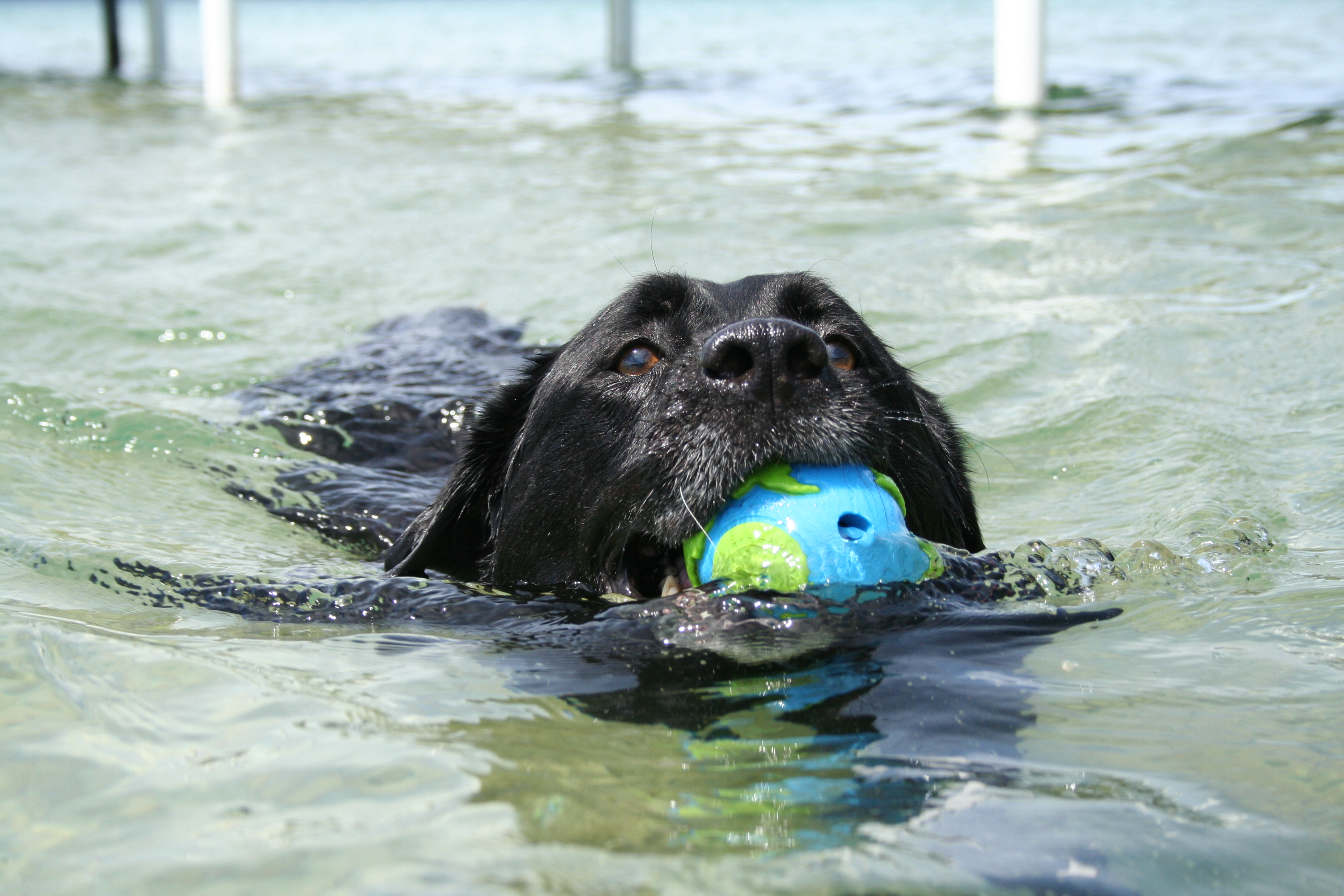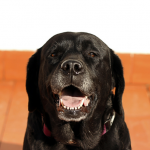Some ear wax is a normal phenomenon seen in dogs. Dogs may shake their heads or enjoy an ear rub from their owners. However, if your retriever is constantly scratching his ears or has a large amount of brown, waxy debris, he could have an ear infection.
Ear infections in dogs (otitis) can be caused by several factors. It could be due to infectious causes such as ear mites, bacterial infections, or yeast infections.
The type of dog and his habits can also be culprits. For example, unhealthy environments, improper hygiene, anatomically pendulous (floppy) ears, abnormally small ear canals (stenotic canals) increased numbers of apocrine (wax) glands and hair follicles in the ear canal; chronic exposure to water (via swimming, etc.) and increased moisture in the ear canal; other predisposing medical conditions such as trauma, dermatological conditions of the pinna (ear flap) and head; and immune system or glandular disorders (e.g. skin allergy, food allergies, immune deficiencies, hyperadrenocorticism, and hypothyroidism) could also lead to otitis.
There are several common signs that your dog has an ear infection. The dog’s ears may smell bad. Brown or yellow discharge may be seen in the ear canal. The dog may scratch constantly at his ear. Some will only shake their head constantly. Your Lab may shake his head so much that it causes the ear pinna (flap) to become swollen. The swelling is called an ear hematoma and should be immediately seen by your veterinarian.
An ear infection can lead to very serious conditions if it is allowed to persist long enough. Chronic and difficult to reverse conditions can occur. The ear canal can become hardened (calcified) and small (stenotic ear canals). The ear drum (tympanic membrane) and structures inside the ear drum can become diseased. If this occurs, you may notice your dog’s head may tilt to one side or he may become very unstable on his feet. If any of these signs occur, immediately seek your veterinarian’s care.
If your dog has an ear infection, take him to the vet and describe the signs you have noticed. Your veterinarian has to find the cause of the infection before treatment can be instituted. The diagnosis is made by swabbing the ear and rolling the debris onto a glass slide, which is then air or heat dried and then stained with a special solution.
Diagnosing the infection can sometimes be straightforward. Usually, with water dogs, the problem is a yeast infection caused by water in the ear from swimming. However, some infections may be due to two or three organisms and may be complicated by a predisposing factor. These factors include the following: hypothyroidism, environmental allergens (oak trees, grass, etc.), and food allergies.
Your dog may receive oral medications, topical ear medications, and a special food for treatment. Make sure you treat the ears as often and for as many days as your vet recommends. Failure to comply could result in reinfection or infection with resistant organisms. Recheck with your vet at the end of the treatment period to make sure the infection has resolved.
How you clean the ears is just as important as what you use to clean them.
Aside from managing food allergies, the single best way to avoid visiting your vet for ear infections is to perform routine ear cleanings. Your animal clinic will usually carry the most appropriate ear cleansing solution. I personally prefer a cleanser that contains a product called Chorhexidine. Most ear products acidify, clean, and contain aloe and a drying agent.
Irrigate the ears until they fill up with solution. Message the ear at the base of the head for a few seconds. This will make a “squishing” noise and will make wax float to the outside of the canal. Using cotton, facial tissue, or toilet paper (not paper towels as they are too rough), wipe away the debris from the ear. Perform the irrigation once more and wipe away debris. Do not use Q-tips to remove wax from the ear, as you can hurt the ear drum and actually pack wax deeper into the canal. I have wrapped toilet tissue around my pinky finger and wiped into the canal. Usually your pinky is too large to hit the ear drum located deep in the canal.
Another useful tip is to apply a solution to the ears after your dog leaves the water for the day. Carry rubbing alcohol mixed 1:1 with hydrogen peroxide in your dog’s training bag. Old contact solution bottles make nice reservoirs for the mixture.
Irrigate or well up this fluid in your dog’s ear, rub the ear for a second, then let the dog shake. The peroxide helps to break up wax, and the rubbing alcohol dries water deep in the canal. Only use rubbing alcohol for maintenance therapy. Never apply rubbing alcohol to ears that are red or infected.
It is important to become aware of the signs of ear infections, what causes them, and how to avoid them. Always take dogs to get treatment when it seems like they have an infection. Routine care is the best way to avoid a trip to the animal clinic. Hopefully these tips keep your dog waiting on the next fun activity, not in the waiting room.







